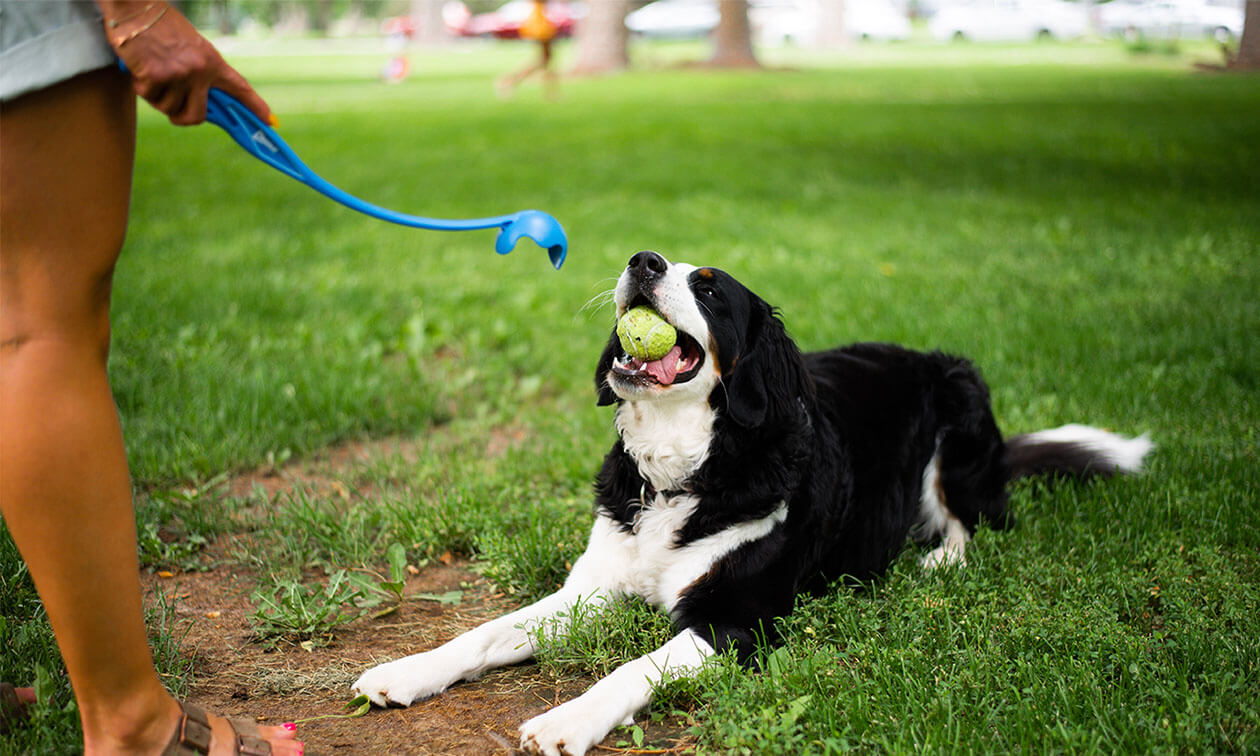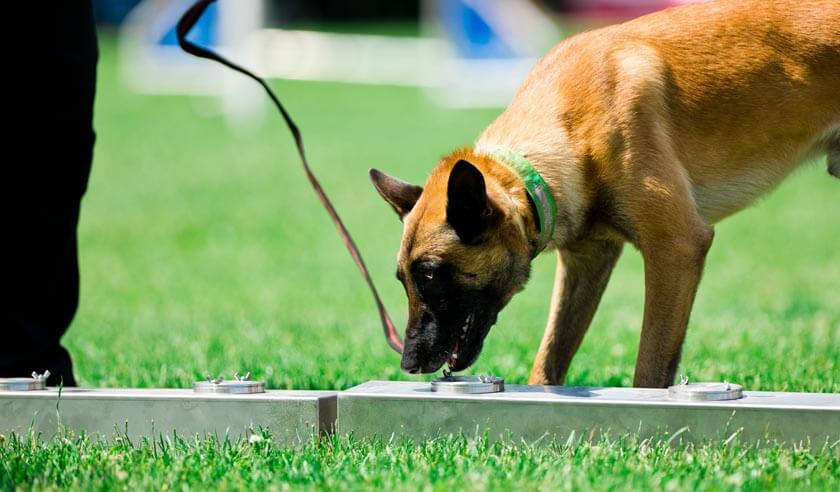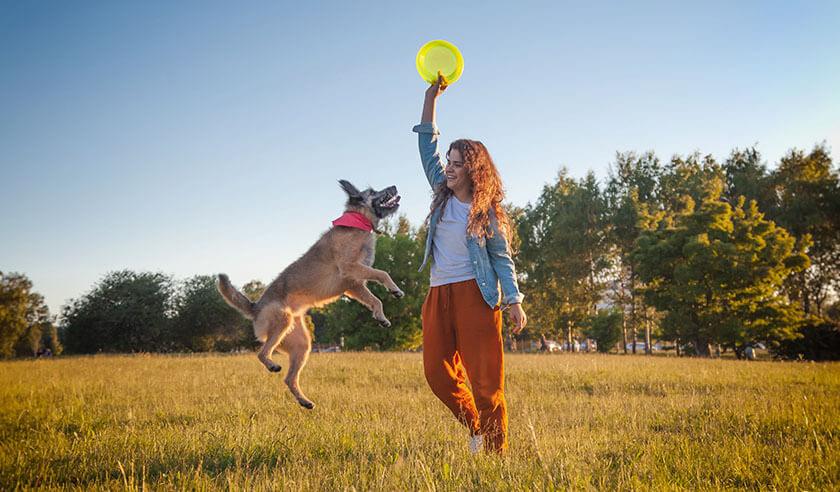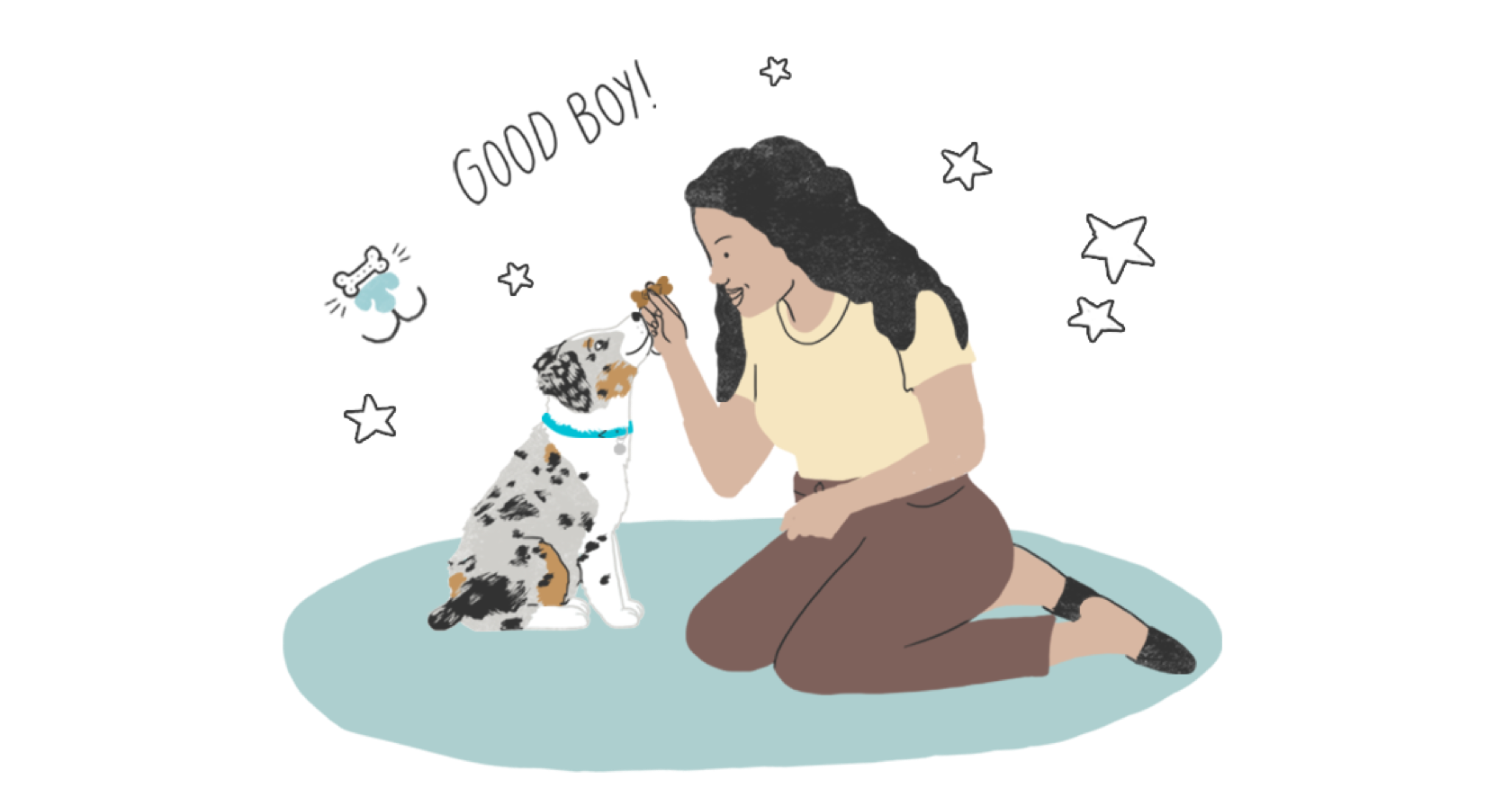Teaching your dog to fetch is not only a fun game to play together but also a valuable skill that can improve obedience, provide exercise and provide needed mental stimulation. Whether you have a new puppy or an older dog, with a little patience and consistency, you can easily teach them to fetch a ball or toy.
The Benefits of Teaching Your Dog To Fetch
A game of fetch is an excellent way to provide physical exercise for your dog, particularly if they have a lot of energy. Running after and retrieving the toy helps to keep them active and fit. Fetching not only exercises your dog's body but also engages their mind. It requires focus and coordination. Playing fetch can also strengthen the bond between you and your dog. It creates opportunities for quality play time together, something that both humans and dogs need for mental wellness.
As always, keep your dog's special needs in mind, including mobility restrictions and what they can safely and comfortably carry in their mouths.
The Steps to Teaching Your Dog To Fetch
Fetch might seem like a behavior that some dogs just know, but there are influencing factors that can make or break your dog’s interest in this game.
- Choose the right toy. Start by choosing a toy or ball that your dog already finds interesting and can hold comfortably in their mouth. It's important to consider the size and texture of the toy, ensuring it's safe and suitable for your dog's size.
- Introduce the toy. Spend some time playing with the toy to make it enticing for your dog. Make it move, bounce, or roll to catch their attention and ignite their curiosity. Often, playing keep away with the toy can increase the toy's value, making your dog even more interested in grabbing at it.
- Encourage your dog to approach the toy by gently tossing it a short distance. Use an excited tone and encouraging gestures to entice them to pick up the toy.
- Add a verbal cue. As your dog starts to approach and show interest in the toy, pair the command "fetch" or any other word of your choice with the act of your dog picking up the toy. Repeat this pairing consistently to create an association between the verbal cue and the action.
- When your dog successfully picks up the toy, praise them enthusiastically and offer a treat or their favorite reward. Positive reinforcement helps establish a positive association with the desired behavior, making them more likely to repeat it.
- Work on retrieval. After your dog picks up the toy, encourage them to bring it back to you. Use an inviting and excited voice while gently backing away from them. This will motivate them to come towards you, holding the toy.
- When your dog brings the toy back to you, reward them with praise, treats, or a play session. Make a big fuss over their success to reward the positive behavior.
- Practice, practice, practice. Gradually increase the distance you throw the toy and vary the location to keep your dog engaged and challenged. You can also start to introduce a new fetch toy or object.
Tips for Teaching a Dog To Fetch
Training often isn’t as straightforward as we want it to be. Here are a few tips that will help you train your dog to fetch.
- Patience is key. Every dog learns at their own pace, so be patient throughout the training process. Rushing or becoming frustrated can hinder their progress and strain your relationship with your dog.
- Keep sessions short. Keep training sessions short, ideally around 5 to 10 minutes. This way, your dog won't get overtired or frustrated, and shorter fetch sessions help prevent ball or toy obsession in certain breeds.
- Consistency is essential. Use the same verbal cue consistently, whether it's "fetch," "get it," or any other phrase you choose. Consistency helps to reinforce the association between the word and the desired action.
- Don't force it. If your dog seems disinterested or reluctant to fetch, don't force them. Take a break and try again later or consider seeking additional guidance from a professional dog trainer.
- Make it fun. Incorporate enthusiasm, playfulness, and your dog's favorite rewards into the training sessions. This will create a positive and enjoyable experience for both of you.
What If Your Dog Can't Hold a Fetch Toy?
For dogs that cannot hold a toy due to physical limitations, you can make adaptations to the game. Use toys designed for dogs with grip challenges, such as balls with handles or specially designed retrieving aids. Alternatively, you can consider training your dog to touch or nudge the toy with their nose as a different way of participating in the game.
Remember, above all, fetch is not a required training skill. If your dog has trouble holding the fetch toy or simply isn't interested in the game, then don't try to force it. Pick a different game or trick to practice instead.
ZPC-03493





